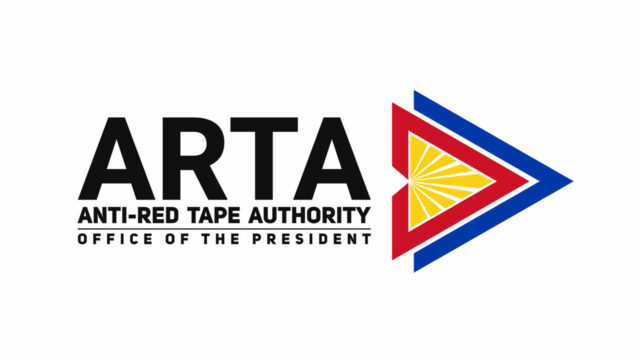“Taxes are the lifeblood of any government.” Hence, taxpayers must remit the taxes due them and not be allowed to evade and escape giving their fair share to the government. To stay compliant, taxpayers have been guided by the Bureau of Internal Revenue’s constant reminders, updates, clarifications, and other revenue issuances on new tax rules. The goal is to pay the right amount of taxes on time. But what happens when taxpayers overpay? Can taxpayers still recover overpaid taxes? Typically, when a taxpayer erroneously overpays taxes, the following options are available: file for a claim for refund or apply the excess payments to next year’s taxes. These options are not that unknown to many. While there are no penalties for overpaying, the downside is going through the time-consuming and arduous process of claiming a refund. It is frustrating to taxpayers that refund cases take a long time to be resolved.
With the Ease of Paying Taxes (EoPT) Law now in place, a better refund process has been established to give taxpayers relief and ease the burden of waiting. In Revenue Regulations No. 5-2024, these changes in the processing of tax refund claims are clarified.
RR 5-2024 discussed the rules for refunding excess input VAT, unutilized excess income tax credit, erroneously or illegally received taxes, and penalties imposed without authority. The RR applies to tax credit or refund claims that are filed starting July 1, 2024 onwards.
REFUNDS OF EXCESS INPUT VAT
VAT refund claims are now classified into low-, medium-, and high-risk claims. Medium- and high-risk claims are subject to audits or other verification processes, while low-risk claims are not. For the purpose of initial classifications, claims filed by first-time claimants are automatically considered high-risk and remain as such for the succeeding three VAT refund claims.
The BIR has 90 days to process and decide the claim. This period starts from the filing of the claim or application for a VAT refund with complete documentary requirements up to the release of the payment thereof.
In the event of full or partial denial of the claim for VAT refund, the taxpayer affected may, within 30 days from receiving the decision denying the claim, appeal the decision with the Court of Tax Appeals (CTA).
However, in case the VAT refund is not acted upon by the Commissioner within the 90-day period, the taxpayer-claimant may appeal to the CTA within the 30-day period after the expiration of the 90 days required by law to process the claim; or forego the judicial remedy and await the final decision of the Commissioner on the application of the VAT refund claim.
Once the taxpayer opts for the judicial remedy, the administrative claim will no longer be processed.
REFUND OF UNUTILIZED EXCESS INCOME TAX CREDIT
The RR distinguishes between refund claims filed by taxpayers of going concern status and taxpayers undergoing dissolution or cessation of business.
REFUND CLAIMS BY TAXPAYERS OF ‘GOING-CONCERN’ STATUS
• A claim for a tax credit certificate or refund filed by taxpayers with “going-concern” status must be filed within two years from the date of filing the annual income tax return.
• The income upon which the taxes were withheld must be included as part of the gross income declared in the income tax return of the taxpayer claiming the refund.
• The fact of withholding must be established by a copy of the withholding tax certificate showing the amount of income payment and the amount of tax withheld.
• The taxpayer-claimant must be clearly identified as the payee on the withholding tax certificate.
The BIR has 180 days from the submission of complete documents in support of the refund to process the claim. In case the tax refund or credit is not acted upon by the Commissioner within the 180-day period, the taxpayer-claimant may opt to:
1. Appeal to the CTA within the 30-day period after the expiration of the 180 days required by law to process the claim; or
2. Forego the judicial remedy and await the final decision of the Commissioner on the application for a refund.
REFUND CLAIMS OF TAXPAYERS UNDERGOING DISSOLUTION OR CESSATION OF BUSINESS
Generally, excess income taxes paid during the year may be carried over and credited against the estimated quarterly income tax liabilities for the taxable quarters of the succeeding taxable years. Once the option to carry over has been made, such an option is considered irrevocable for that taxable period, and no application for a cash refund or the issuance of a tax credit certificate (TCC) is allowed.
As an exception to the irrevocability rule, taxpayers who chose the option to carry over may claim a refund provided that they have permanently ceased operations. The BIR will decide on the application and refund the excess taxes within two years from the date of the dissolution or cessation of business. This is an exception to the 180-day processing of TCC/refund under Section 204 (C) of the Tax Code.
The two-year period to decide and refund the excess taxes commences with the submission of the “Application for Registration Information Update/Correction/Cancellation” (BIR Form No. 1905) together with the complete documentary requirements set by the BIR for the closure of business.
The judicial remedy, in case of dissolution, must be filed with the CTA within 30 days of partial or full denial by the BIR.
Any approved refund may only be released after the mandatory audit and full settlement of the tax liabilities relative to the cessation or dissolution of the business and any existing tax liabilities prior to the cessation or dissolution of the business.
REFUND OF ERRONEOUSLY COLLECTED TAXES AND PENALTIES
In cases of claims for tax credit or refund of erroneously collected taxes or penalties, the filing of the claim must be done within two years after the payment of the taxes or penalties. The erroneously or illegally collected taxes must be supported by a copy of the duly filed tax return with the corresponding payment remitted to the BIR.
The BIR now has 180-days to act and decide on the cases filed within two years after the erroneous collection of taxes. In the event of full or partial denial of the refund claims, the taxpayer may appeal to the CTA within 30 days from the receipt of the decision. In cases of inaction, the taxpayer has the option to appeal to the CTA within the 30-day period after the expiration of the 180-day period or forego the judicial remedy and await the final decision of the Commissioner on the application of the refund claim.
There are extra reasons to be mindful of our responsibilities as taxpayers. Knowing the refund process and understanding the timeliness of the procedures are advantageous, especially if you are expecting to apply for one. Indeed, it is beneficial to know and comprehend these processes to help us decide in cases of recovering taxes. It can be lengthy and costly; however, with the right approach and refund management, it can be processed faster, creating a frictionless experience between the authority and the taxpayers. With the implementation of the EoPT law, an improvement in our refund system will both empower taxpayers and the government.
Let’s Talk Tax is a weekly newspaper column of P&A Grant Thornton that aims to keep the public informed of various developments in taxation. This article is not intended to be a substitute for competent professional advice.
Maricel P. Katigbak is a senior manager from the Tax Advisory & Compliance division of P&A Grant Thornton, the Philippine member firm of Grant Thornton International Ltd.
pagrantthornton@ph.gt.com















